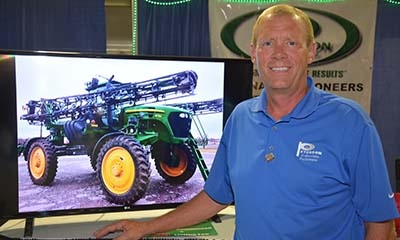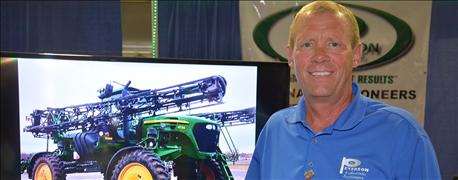
Upgrading farm fleets with new or late-model equipment has been a longtime practice as farmers use Section 179 of the federal tax code to quickly depreciate the purchase on the annual tax bill.
While Section 179 can be used for new or used pieces, the Internal Revenue Service also offers a special depreciation allowance for new equipment in which farmers can write off an additional 50% after the Section 179 deduction.

Tim Slatt at Peterson and Associates Auction Company says prices for used sprayers have dropped 50% or more in the past few years.
“From a tax standpoint, the new equipment has additional advantages. From a price standpoint, the used equipment could be more advantageous, particularly if there is no trade-in,” says Marc Johnson, a partner with the accounting and consulting firm K-Coe Isom. “So you really have to do an analysis on how much you are going to spend, and how long you are going to keep it.”
Also, when farmers trade for equipment, the resulting deduction under Section 179 would only be for the trade difference and not for the traded property. The maximum allowed write-off per year “generally” cannot be more than $500,000.
Production of new equipment has decreased amid the weak farm economy, and that decline in new supplies should increase demand for used.
Data from the Association of Equipment Manufacturers showed 2016 production through July of 100-hp two-wheel-drive tractors down 24% from a year ago, four-wheel-drive tractors down 33.6% and self-propelled combines down 22%.
Jim Walker, vice president of Case IH North America, says supplies of used combines are already manageable.
“This is the best shape we have seen in a while on used combine supplies,” he says. “I think the backlog now is in four-wheel-drive tractors and 180-hp row-crop tractors.”
Currently, Case IH is selling more tractors and combines than it is producing, and Walker says it may take six months to a year to pare down the inventory of used equipment.
“Once this used supply has even an inkling of getting to a manageable level, I think we will see an upward tick in industry sales,” he says.
While some industry watchers say sales of sprayers have been slow, Walker says sprayer sales to commercial firms, like co-ops, have been good, but slow to individual farmers. Tim Slatt at Del Peterson and Associates auction house says prices for used sprayers have dropped 50% or more in the past few years.
“Sprayers that were bringing $50,000 to $60,000 are now bringing $20,000 to $30,000,” says Slatt. “Those are the ones with a few hours on them; the newer ones are holding better.”
Perks offered
To speed the sale of used equipment from dealer lots, Case IH and other manufacturers offer financing and warranties on certain pieces of used equipment that has been inspected and refurbished.
“A lot of manufacturers have implemented the certified pre-owned program in the same manner that the automobile industry has — offering some extended warranties and things to try and make the used equipment a little more attractive,” says Rick Lawhun, president and CEO of the Equipment Dealers Association.
Lawhun says a preliminary survey of its dealer-members indicates the supply of used equipment has stabilized or declined slightly in the second quarter from the first quarter.
About the Author(s)
You May Also Like




